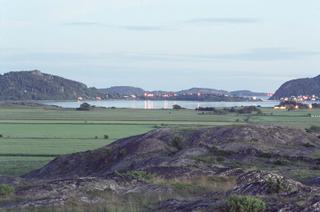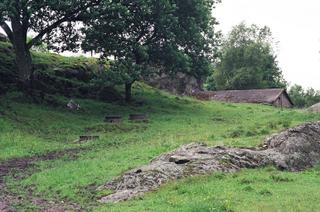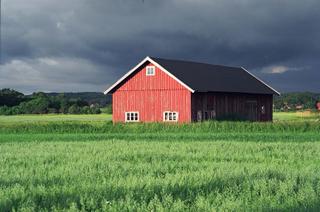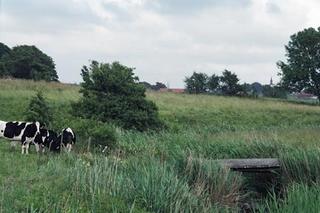Of Fair Visingsö (Swedish Notes #4)
 Visingsö
VisingsöThere is a saying among the Swedes that: "He who has not seen Visingsö has not seen Sweden!" Actually I just made that up. I think the saying really goes: "He who has not seen Visingsö has not seen Visingsö!" (which can hardly be denied). In any case, Visingsö is a quiet, lovely little island in big Lake Vattern in the middle of Sweden. If you want a nice peaceful pleasant interlude, exploring a beautiful little island with surprisingly varying scenery, where you can take a swim in the lake, or a bike ride through a forest or on a country road, then this is a good place for it.
In the summer there are plenty of tourists on Visingsö. But they are mostly Swedish families or couples who adapt to the nice quiet pace of the island, cooking their meals, making little picnics, taking little horse drawn carriage rides, and fitting in fairly well. Tourism seems to be a big part of the of economy, but there are also farms, livestock, orchards, etc, so it seems to be a real place, especially the further you get from the harbor, though I suppose most of the farmers are just part time. I didn't see any Americans here. Come to think of it, I didn't see many Americans at all in Sweden, maybe just a few in Göteborg. I guess once they get this far North they just go to the cities. I asked a lady I met there if she ever sees Americans. She said of course there are plenty of Americans. For example, she remembers meeting an American from Chicago around five years ago.
 The best way to get around on Visingsö is by bicycle. I rented my bike for 75 kronar/day from Öbergs Kafé and Hembageri. It is also possible to rent a bike for 50kr/day at the Piri Piri Thai Restaurant at the harbor. The bikes at both places are about equally bad, so I figured I might as well rent the more expensive one. The other advantage is that if I had rented from Piri Piri, then when I finally left the island I would have been able to ride almost all the way to the ferry with my heavy pack, but instead I had to walk three kilometers from Öbergs after dropping off the bike. All the bikes on Visingsö have three gears. I couldn’t get first gear to work, so I brought it back to Öbergs. The bicycle repair guy at Öbergs (I suspect he is also the chef) worked on it for a long while until finally second gear also wouldn’t work. Then he asked me what did I think about that? I wasn’t quite sure how to answer. He finally offered me a different bike. First gear also didn’t work on the second bike, but I took it and honestly felt much better about the whole thing.
The best way to get around on Visingsö is by bicycle. I rented my bike for 75 kronar/day from Öbergs Kafé and Hembageri. It is also possible to rent a bike for 50kr/day at the Piri Piri Thai Restaurant at the harbor. The bikes at both places are about equally bad, so I figured I might as well rent the more expensive one. The other advantage is that if I had rented from Piri Piri, then when I finally left the island I would have been able to ride almost all the way to the ferry with my heavy pack, but instead I had to walk three kilometers from Öbergs after dropping off the bike. All the bikes on Visingsö have three gears. I couldn’t get first gear to work, so I brought it back to Öbergs. The bicycle repair guy at Öbergs (I suspect he is also the chef) worked on it for a long while until finally second gear also wouldn’t work. Then he asked me what did I think about that? I wasn’t quite sure how to answer. He finally offered me a different bike. First gear also didn’t work on the second bike, but I took it and honestly felt much better about the whole thing.I stayed at the hostel Fredängen on Visingsö. It was the nicest hostel I have ever been in. Clean, peaceful, friendly, inexpensive, with a view of Lake Vattern, and a beautiful breeze in the (summer) evening. Please stay there if you visit Visingsö. In fact, you ought to visit Visingsö just so that you can stay there: visingsovandrarhem.se/index.htm.
Visingsö is quiet these days. But you should have seen it 400 years ago, when Count Per Brahe the Younger was running the place from his castle. Then it was really swinging. You can see the remains of his castle from the harbor. I watched the castle as I left the island. Visingsö is a magical place. It appears deceptively simple, but it has great variety and depth and reveals itself slowly, so that each day it appears a little different and a little surprising.


Visingsö, a type of cow.






